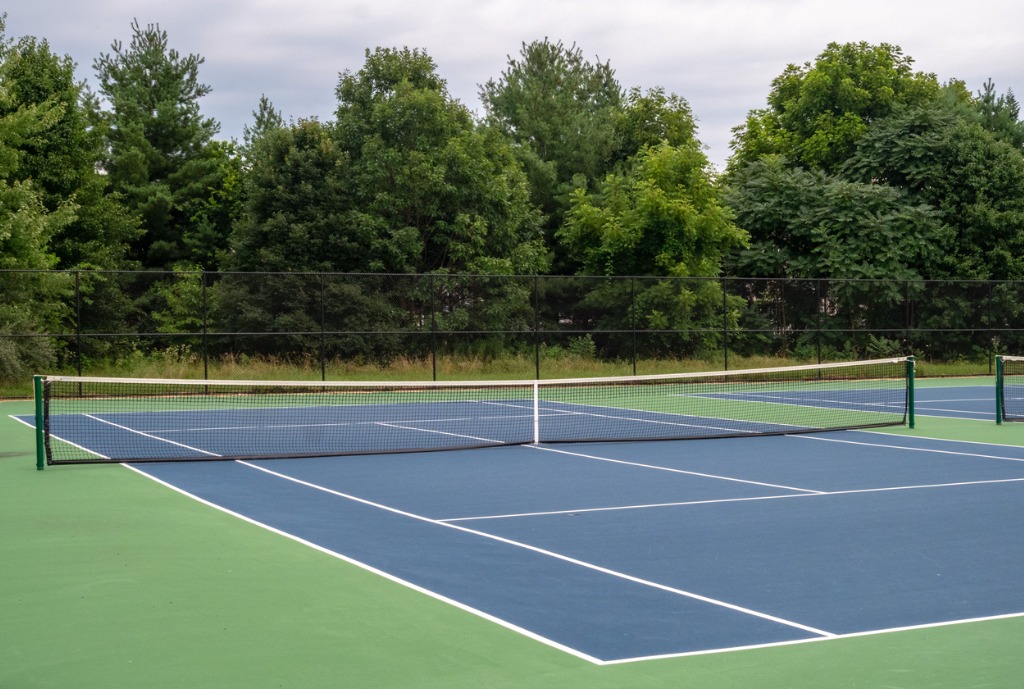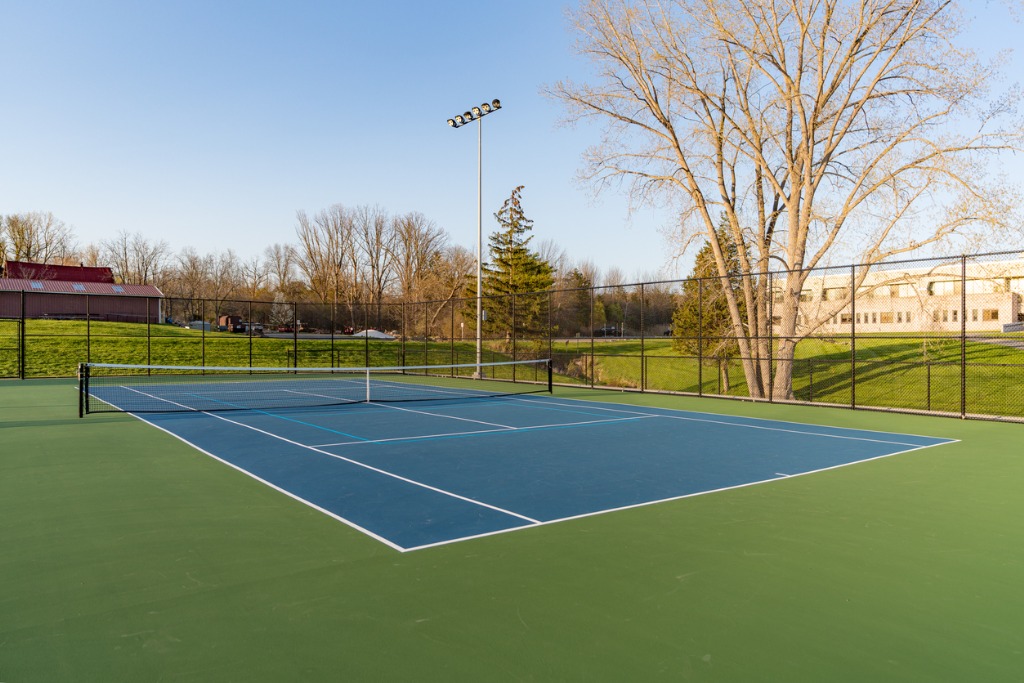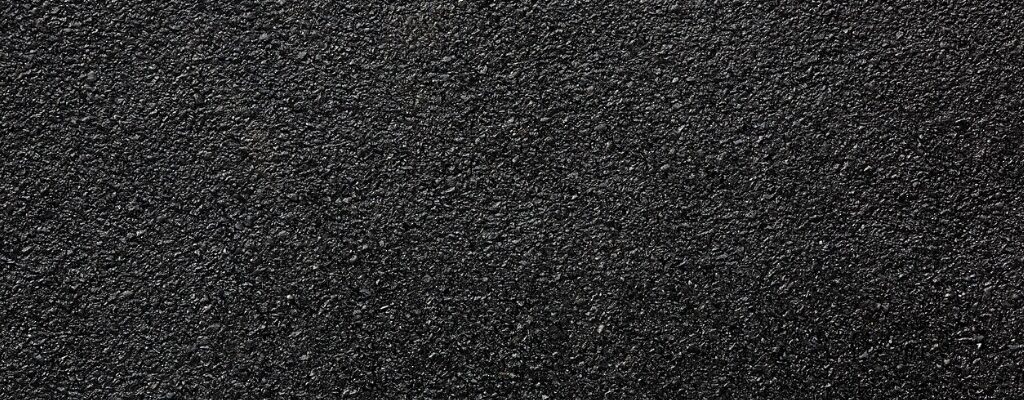There’s nothing quite like playing on a pristine tennis court, but over time, even the best maintained courts lose their bounce and become cracked. While you may need to replace the tennis court at some point, you can get more life out of your tennis court by resurfacing it every three to five years. Here’s everything you should know.
Why Does the Tennis Court Surface Matter?
In the U.S., most tennis courts are referred to as hard courts, as they have an asphalt or concrete base. The court’s surface can be coated with different materials, which affect the play of the game, the bounce of the ball, and how fast the players move. Hard courts are relatively easy to maintain and have a good bounce.
 Wimbledon has natural grass courts, which are said to provide the fastest speed of play. Grass courts are the most expensive but are designed for pro players. Maintaining a grass court is also more expensive.
Wimbledon has natural grass courts, which are said to provide the fastest speed of play. Grass courts are the most expensive but are designed for pro players. Maintaining a grass court is also more expensive.
Red clay courts are popular in Europe and South America. They are softer on the body, which reduces injury while playing but makes it harder to get points. You may have more bad bounces on clay courts, especially if they aren’t well-maintained. Clay courts require more maintenance than hard courts, but the surface is cooler than hard courts, even in the hottest months. Clay courts also cause fewer injuries.
There are also synthetic turfs that can be applied for multi-sport venues. These turfs are generally low maintenance but still provide a consistent speed, spin, and bounce over the surface.
Determining the right surface for your court depends on the players and the types of games they play or that you offer. You may also need to think about your local climate and availability of water. Surface matters to players but also to course owners.
McConnell & Associates not only offers tennis court installation and repair, but we can also help you determine which type of court fits your needs. We understand all types of tennis court surfaces and can help you find the surface that meets your playing needs.
How Do You Know When You Should Resurface a Tennis Court?
First, you should look at the lifespan of your tennis court’s surface. Artificial turf can last 15 or more years, while other finishes may only last 5 to 7. Ideally, you want to resurface the court before it reaches about 75% of its lifespan. Here are a few signs that indicate your court needs to be resurfaced.
- Water pools on the court and doesn’t evaporate quickly.
- The color of the court has faded.
- The surface bubbles or cracks, and the cracks get larger.
- You see mold or mildew growth on the surface.
- Players complain about how difficult it is to play on the court.
Keeping your court functional makes it a joy to play on, but it also makes it safer for the players. Resurfacing can also increase the court’s use to accommodate other sports and more game time. Whether you use your court for personal use or as a commercial venture, it’s important to keep your tennis court well-maintained.
How Does Tennis Court Resurfacing Work?
Tennis court resurfacing is a two-phase process. It’s very complex, so it should be left to the professionals. Resurfacing requires specialized equipment and knowledge to get it done right the first time.
 Before resurfacing your tennis court, the contractor will need to make repairs. Typically, the top layer of the court will be removed so that the base layer can be inspected and repaired. Ideally, the drainage system will be inspected and assessed. When repairing cracks, the debris from the crack must be removed before filling and sealing. If you have birdbaths, you may need an asphalt patch or layers of acrylic patch binder.
Before resurfacing your tennis court, the contractor will need to make repairs. Typically, the top layer of the court will be removed so that the base layer can be inspected and repaired. Ideally, the drainage system will be inspected and assessed. When repairing cracks, the debris from the crack must be removed before filling and sealing. If you have birdbaths, you may need an asphalt patch or layers of acrylic patch binder.
Once the imperfections are fixed, the tennis court surface is replaced. You can choose a different surface if you like. New coats of paint are applied to make your court look great for players. It can take three to six days to resurface a tennis court, depending on its size and damages.
Extending the Life of Your Tennis Court
Not only can you make your court last longer, but you can extend the time between resurfacing jobs by taking care of your court. The foundation of the court is probably the most important thing. You want to make sure that the foundation drains well and is properly installed.
Proper tennis court maintenance can also extend its life.
- Remove moss, mold, and weeds quickly.
- Clean debris, such as leaves or dirt, from the court daily. Pine needles are especially destructive to the surface.
- Wash the surface regularly with a light power washer and mild detergent.
- Make sure the drainage points are working effectively. Leaves can build up and block the drains, which diverts the water to areas you don’t want it to be.
- Remove sharp objects from the surface.
- Fix cracks and other problems as they occur.
How Much Will Resurfacing Cost?
Unfortunately, there’s no good formula to determine resurfacing costs because there are many variables. It depends on the size of your court, the materials you use, and how much damage needs to be repaired before resurfacing. It can also depend on how easy your court is to access.
The good news is that resurfacing won’t be as expensive as replacing the court, and you can contact the experts here at McConnell & Associates to receive a free quote. Our award-winning courts are recognized for their impeccable craftsmanship and superb design. Whether you require a brand new tennis court or you need to resurface one of your courts, we cannot wait to get started.
Reach out to us and become part of a winning team!


.png)


